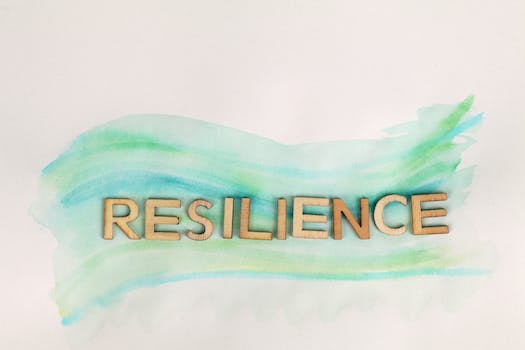Table of Contents
Building Resilience: A Key Leadership Skill in the 21st Century – Empowering Leaders to Thrive in an Ever-Changing World.
Introduction
Building resilience is a crucial leadership skill in the 21st century. In today’s rapidly changing and unpredictable world, leaders must be able to navigate through challenges, setbacks, and uncertainties with resilience. Resilient leaders possess the ability to adapt, bounce back from failures, and maintain a positive mindset in the face of adversity. This skill not only enables leaders to effectively lead their teams but also helps them to drive innovation, make informed decisions, and inspire others to overcome obstacles. In this article, we will explore the importance of building resilience as a key leadership skill in the 21st century and discuss strategies to develop and strengthen this essential trait.
The Importance of Building Resilience in Leadership

Building Resilience: A Key Leadership Skill in the 21st Century
In today’s fast-paced and ever-changing world, the ability to adapt and bounce back from challenges is crucial for leaders. This is where resilience comes into play. Resilience is the capacity to recover quickly from difficulties and setbacks, and it is a key leadership skill that can make all the difference in achieving success.
Resilient leaders are able to navigate through uncertainty and ambiguity with ease. They are not easily discouraged by setbacks or failures, but instead, they view them as opportunities for growth and learning. This mindset allows them to stay focused on their goals and find creative solutions to problems.
One of the reasons why building resilience is so important in leadership is because it helps leaders to effectively manage stress. In today’s high-pressure work environments, stress is inevitable. However, resilient leaders are able to handle stress in a healthy way, without letting it negatively impact their decision-making or relationships with their team members.
Resilient leaders also have the ability to inspire and motivate others. When faced with challenges, they remain calm and composed, which helps to instill confidence in their team members. This, in turn, encourages their team to stay positive and persevere through difficult times. By leading by example, resilient leaders create a culture of resilience within their organizations.
Furthermore, building resilience in leadership is essential for fostering innovation and adaptability. In today’s rapidly changing business landscape, organizations need leaders who can think outside the box and embrace change. Resilient leaders are not afraid to take risks and try new approaches. They understand that failure is a natural part of the learning process and are willing to experiment and iterate until they find the right solution.
Another reason why building resilience is important in leadership is because it helps leaders to maintain a healthy work-life balance. Resilient leaders understand the importance of self-care and prioritize their well-being. They know that in order to be effective leaders, they need to take care of themselves first. By setting boundaries and practicing self-care, resilient leaders are able to avoid burnout and maintain their energy and focus.
In conclusion, building resilience is a key leadership skill in the 21st century. Resilient leaders are able to navigate through challenges and setbacks with ease, effectively manage stress, inspire and motivate others, foster innovation and adaptability, and maintain a healthy work-life balance. By developing resilience, leaders can not only achieve personal success but also create a positive and resilient culture within their organizations. In today’s rapidly changing world, building resilience is not just a nice-to-have skill, but a necessity for effective leadership.
Strategies for Developing Resilience as a Leader
In today’s fast-paced and ever-changing world, resilience has become a crucial skill for leaders to possess. The ability to bounce back from setbacks, adapt to new challenges, and maintain a positive mindset is essential for success in the 21st century. Fortunately, resilience is not an innate trait but rather a skill that can be developed and strengthened over time. In this section, we will explore some strategies for developing resilience as a leader.
One of the first steps in building resilience is to cultivate a growth mindset. This involves embracing challenges, viewing failures as opportunities for growth, and believing in one’s ability to learn and improve. Leaders with a growth mindset are more likely to persevere in the face of adversity and see setbacks as temporary rather than permanent. By reframing setbacks as learning experiences, leaders can develop a more resilient mindset.
Another strategy for developing resilience is to build a strong support network. Surrounding oneself with positive and supportive individuals can provide a source of encouragement and motivation during difficult times. Leaders should seek out mentors, colleagues, and friends who can offer guidance, advice, and a listening ear. Additionally, participating in professional networks and organizations can provide opportunities for collaboration and learning from others’ experiences.
Practicing self-care is another important aspect of building resilience. Leaders must prioritize their physical, mental, and emotional well-being in order to effectively navigate challenges and setbacks. This may involve setting boundaries, practicing mindfulness or meditation, engaging in regular exercise, and taking time for hobbies and activities that bring joy and relaxation. By taking care of themselves, leaders can better manage stress and maintain a positive outlook.
Developing strong problem-solving and decision-making skills is also crucial for building resilience. Leaders who are able to analyze situations, identify potential solutions, and make informed decisions are better equipped to handle unexpected challenges. This may involve seeking out additional training or education, staying up-to-date with industry trends, and seeking feedback from trusted colleagues or mentors. By continuously honing their problem-solving skills, leaders can become more adaptable and resilient in the face of adversity.
Finally, leaders should embrace a proactive and flexible approach to change. In today’s rapidly evolving world, change is inevitable, and leaders must be able to adapt quickly and effectively. This may involve seeking out new opportunities, embracing new technologies or ways of working, and being open to feedback and constructive criticism. By embracing change and being willing to step outside of their comfort zones, leaders can develop the resilience needed to thrive in the 21st century.
In conclusion, building resilience is a key leadership skill in the 21st century. By cultivating a growth mindset, building a strong support network, practicing self-care, developing problem-solving and decision-making skills, and embracing change, leaders can become more resilient and better equipped to navigate the challenges of today’s world. Developing resilience is not a one-time task but rather an ongoing process that requires dedication and practice. However, the benefits of resilience are well worth the effort, as resilient leaders are better able to inspire and motivate their teams, adapt to change, and achieve long-term success.
How Resilient Leaders Navigate Challenges and Adversity
In the fast-paced and ever-changing world of the 21st century, leadership skills have become more important than ever before. One key skill that has emerged as crucial for leaders in this new era is resilience. Resilient leaders are able to navigate challenges and adversity with grace and determination, inspiring their teams to do the same.
So, what exactly is resilience? Resilience can be defined as the ability to bounce back from setbacks, adapt to change, and keep moving forward in the face of adversity. It is not about avoiding challenges or pretending that everything is always perfect. Instead, it is about acknowledging the difficulties and finding ways to overcome them.
Resilient leaders understand that challenges are a natural part of life and business. They do not shy away from difficult situations, but rather embrace them as opportunities for growth and learning. They are able to maintain a positive attitude even in the face of adversity, inspiring their teams to do the same.
One of the key ways that resilient leaders navigate challenges is by maintaining a growth mindset. They believe that their abilities and intelligence can be developed through hard work and dedication. This mindset allows them to see setbacks as temporary and solvable, rather than permanent and insurmountable. They are able to learn from their mistakes and use them as stepping stones to future success.
Resilient leaders also understand the importance of self-care. They know that in order to effectively lead others, they must first take care of themselves. They prioritize their physical and mental well-being, making time for exercise, relaxation, and reflection. This allows them to recharge and approach challenges with a clear and focused mind.
Another key characteristic of resilient leaders is their ability to build strong relationships. They understand that they cannot navigate challenges alone and rely on the support and expertise of others. They foster a sense of trust and collaboration within their teams, creating an environment where everyone feels valued and supported. This allows them to tap into the collective wisdom and creativity of their team members, finding innovative solutions to challenges.
Resilient leaders also possess strong problem-solving skills. They are able to analyze complex situations, identify the root causes of problems, and develop effective strategies for overcoming them. They are not afraid to take risks and try new approaches, knowing that failure is often a necessary part of the learning process. They are able to adapt their plans as needed and make quick decisions in the face of uncertainty.
In conclusion, building resilience is a key leadership skill in the 21st century. Resilient leaders are able to navigate challenges and adversity with grace and determination, inspiring their teams to do the same. They maintain a growth mindset, prioritize self-care, build strong relationships, and possess strong problem-solving skills. By developing these qualities, leaders can effectively lead their teams through the ever-changing landscape of the modern world.
Building Resilience in Teams: A Leadership Perspective
Building Resilience: A Key Leadership Skill in the 21st Century
In today’s fast-paced and ever-changing business landscape, building resilience has become a crucial leadership skill. As organizations face increasing uncertainty and volatility, leaders must be able to navigate through challenges and setbacks while keeping their teams motivated and focused. This article will explore the importance of building resilience in teams from a leadership perspective.
Resilience can be defined as the ability to bounce back from adversity and adapt to change. It is not about avoiding or ignoring challenges, but rather about facing them head-on and finding ways to overcome them. In a team setting, resilience is essential for maintaining productivity, fostering innovation, and ensuring long-term success.
One of the key roles of a leader is to create a supportive and empowering environment where team members feel safe to take risks and learn from their failures. By building resilience in teams, leaders can help their members develop the skills and mindset needed to thrive in the face of adversity.
One way leaders can foster resilience in teams is by encouraging open communication and collaboration. When team members feel comfortable sharing their ideas, concerns, and challenges, they are more likely to find creative solutions and support each other during difficult times. This can be achieved through regular team meetings, brainstorming sessions, and one-on-one conversations.
Another important aspect of building resilience in teams is providing opportunities for growth and development. Leaders should invest in training and development programs that enhance the skills and capabilities of their team members. By equipping them with the necessary tools and knowledge, leaders can empower their teams to face challenges with confidence and resilience.
Furthermore, leaders should lead by example and demonstrate resilience in their own actions and decisions. When team members see their leaders remaining calm and composed in the face of adversity, they are more likely to adopt a similar mindset. This can be achieved by practicing self-care, seeking support from mentors or coaches, and maintaining a positive outlook.
Building resilience in teams also requires leaders to foster a culture of learning and continuous improvement. By encouraging a growth mindset, leaders can help their teams view setbacks as opportunities for growth and development. This can be achieved by providing constructive feedback, recognizing and celebrating small wins, and encouraging experimentation and innovation.
In addition, leaders should be proactive in identifying and addressing potential sources of stress and burnout within their teams. This can be done by promoting work-life balance, providing resources for stress management, and encouraging self-care practices. By prioritizing the well-being of their team members, leaders can create a resilient and high-performing team.
In conclusion, building resilience in teams is a key leadership skill in the 21st century. By creating a supportive and empowering environment, providing opportunities for growth and development, leading by example, fostering a culture of learning, and prioritizing well-being, leaders can help their teams navigate through challenges and setbacks with resilience and adaptability. In doing so, they can ensure the long-term success and sustainability of their organizations in today’s rapidly changing business landscape.
Q&A
1. What is resilience?
Resilience is the ability to bounce back from adversity, adapt to change, and recover quickly from setbacks or challenges.
2. Why is building resilience important in leadership?
Building resilience is important in leadership because it allows leaders to navigate through difficult situations, make effective decisions under pressure, and inspire and support their teams during times of uncertainty or crisis.
3. How can leaders develop resilience?
Leaders can develop resilience by practicing self-care, maintaining a positive mindset, seeking support from mentors or coaches, learning from failures, and continuously developing their emotional intelligence and problem-solving skills.
4. What are the benefits of having resilient leaders?
Having resilient leaders can lead to increased productivity, improved team morale, better decision-making, and the ability to effectively manage change and uncertainty. Resilient leaders also serve as role models for their teams, inspiring them to overcome challenges and achieve success.
Conclusion
Building resilience is a crucial leadership skill in the 21st century. In a rapidly changing and unpredictable world, leaders must be able to adapt, bounce back from setbacks, and navigate through challenges effectively. Resilient leaders are able to inspire and motivate their teams, maintain a positive mindset, and make sound decisions even in the face of adversity. By developing resilience, leaders can not only overcome obstacles but also foster a culture of resilience within their organizations, enabling them to thrive in an ever-evolving business landscape.




